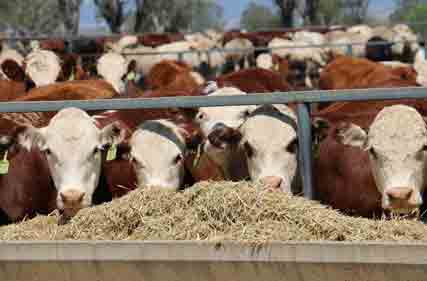 Impressive numbers through Australian feedlots remained for the 2024 September quarter, as shown by the results of the quarterly feedlot survey published by the Australian Lot Feeders’ Association (ALFA) and Meat & Livestock Australia (MLA). Numbers on feed remained above 1.4 million head, and capacity remained at 1.6 million.
Impressive numbers through Australian feedlots remained for the 2024 September quarter, as shown by the results of the quarterly feedlot survey published by the Australian Lot Feeders’ Association (ALFA) and Meat & Livestock Australia (MLA). Numbers on feed remained above 1.4 million head, and capacity remained at 1.6 million.
ALFA President Grant Garey said that despite some increases in feed and feeder steer prices, increased supply of feeders has encouraged a new business as usual for lot feeders, taking advantage of relatively stable margins.
“The Australian feedlot sector has grown 24% in just the past five years. While the numbers on feed lifted just 6,200, and capacity is up less than 6,000 head, it is comforting to see the sector can maintain size after over two years of impressive growth.”
“Small increases in capacity and numbers have shown a maintenance in the sector over the past six months. State records were seen in NSW and SA, while Queensland and Victoria dipped in numbers,” Mr Garey said.
Turnoff figures for the quarter were lifted 17% from the previous quarter and 39% from the same quarter in 2023, with 859,930 head, the second largest turnoff volume of record.
Australian beef exports lifted 12% on the previous quarter to a record 365,842 tonnes. Grain fed beef made up 28% of this total volume, reaching its individual volume record lifting above 100,941 tonnes.
Senior Market Information Analyst for MLA Erin Lukey supported the record total beef export figures by pointing to productive feedlots.
“High turnoff related to number of head, partnered with larger carcases from longer programs are exiting the system and have been contributing to Australian record beef export figures seen this year,” Ms Lukey said.
The average feeder steer prices and Darling Downs wheat prices lifted across the quarter. National feeder steer prices came in at 357¢/kg cwt, up 10% on the previous quarter, and wheat prices up a similar 7% to 393$/tonne.
“Livestock and feed are the two main inputs for feedlots. Both major inputs being up this quarter have placed additional pressure on feedlot margins. However, looking at monthly prices, a reduction in both over September is a positive move.”
